Exploring Weatherflow Wind Meters for Kiteboarding


Intro
As kiteboarding continues to gain traction among outdoor sports enthusiasts, understanding the tools available is essential for maximizing enjoyment and safety. Weatherflow wind meters, which market themselves as reliable aides, bridge the gap between mere guesswork and precise wind data. This article takes a deep-dive into how these meters enhance the kiteboarding experience, from their basic functionalities to their advanced tech features that appeal to all kiteboarders, regardless of their skill level.
The significance of accurate wind measurements can't be overstated. For kiteboarders, knowing wind speeds and directions directly influences choices about where and when to ride. Diving into the balance between technology and traditional methods, we’ll look at how these modern devices empower riders, encouraging safer and more informed adventures on the water. Furthermore, their compatibility with mobile apps presents a seamless integration of technology that every kiteboarder can exploit.
With this foundational understanding in mind, let’s explore key areas that define the landscape of kiteboarding gear and techniques.
Gear and Equipment
Essential Kiteboarding Gear for Beginners
For those just stepping into the world of kiteboarding, having the right gear can make all the difference. One cannot simply roll into a beach with a neglectful attitude towards gear and expect the best. Essential items to get started include:
- Kite: Select the right size for your weight and local wind conditions.
- Board: A beginner-friendly board typically has a larger surface area for stability.
- Harness: Invest in a comfortable harness that fits well and offers support while riding.
- Safety Leash: A lifesaver; this connects you to the kite, ensuring it doesn’t fly off uncontrollably.
Advanced Equipment for Experienced Riders
Once you’ve mastered the basics, consider leveling up your gear to match your skills, ensuring you stay at the top of your game:
- Performance Kites: Look for advanced options that offer heightened responsiveness.
- High-Aspect Ratio Boards: These provide better speed and precision in handling.
- Impact Vests: Enhance your safety without compromising on mobility while performing tricks.
- Hydration Packs: Stay refreshed out on the water with easy access to water.
Each piece of equipment plays a crucial role in either enhancing performance or ensuring safety, and that’s where Weatherflow wind meters step in as a vital accessory for informed riding.
Techniques and Tips
Basic Riding Techniques for Newbies
To ride well, it all starts with understanding fundamental techniques. Here are crucial pointers:
- Body Position: Stay low and balanced on the board to maintain control.
- Kite Control: Learn how to fly the kite efficiently, using the wind's power to propel yourself forward.
- Turning and Stopping: Practice bowing to make smooth turns and mastering the art of stopping.
Expert Tricks to Elevate Your Skills
Once the basic moves are second nature, you might want to impress your friends with some nifty tricks:
- Jumping: Focus on load and pop; timing is everything.
- Surface Tricks: Attempt moves like the “kite loop” for a stylish flair.
- Handle Passes: This advanced skill involves passing the control bar behind your back mid-air.
In embracing these tips, the importance of utilizing Weatherflow wind meters becomes even clearer. Accurate wind measurement can amplify your kiteboarding strategy and enhance your skills effectively.
In the world of kiteboarding, having precise wind data isn’t just about performance; it’s about safety. Weatherflow meters provide real-time information that enables riders to make informed decisions on-the-fly.
As we transition through the various layers of kiteboarding experiences, remember that technological innovations like weather meters can significantly enrich your ride. Moving on, we'll explore calibration techniques that ensure your Weatherflow gears are ready to serve.
Understanding Weatherflow Wind Meters
In the world of kiteboarding, understanding wind is akin to a painter knowing their palette. Weatherflow wind meters stand at the center of this knowledge, providing accurate, real-time data that can significantly transform the experience of both novice and veteran kiteboarders. The landscape of kiteboarding is dynamic; wind conditions can change in the blink of an eye. Therefore, having a tool like Weatherflow at your disposal is not merely advantageous but essential for safety and performance.
Grasping how these meters operate, what they measure, and their various features offers kiteboarders crucial insights that can profoundly affect their rides. Furthermore, these devices can help users make informed decisions, assess risk levels, and enhance their overall enjoyment on the water. With the right tool, one can navigate both challenges and triumphs, maximizing the potential for adventure in the great outdoors.
What is a Weatherflow Wind Meter?
A Weatherflow wind meter is a sophisticated tool designed to measure wind speed and direction accurately. Unlike traditional anemometers that may require calibration and manual data logging, the Weatherflow units offer seamless integration with smart technology. They are compact, portable devices, often featuring wireless functionality. These meters typically utilize ultrasonic sensors to measure wind variables without the obstruction that mechanical instruments face. This translates to not only precision but also a smoother experience for those on the water.
Suppose you’re at your favorite kiteboarding spot, and the sky is buzzing with adrenaline. Without a reliable wind meter, gauging conditions can be a roll of the dice. However, with a Weatherflow wind meter, kiteboarders can access live wind readings straight on their smartphones.
Key Features and Specifications
Weatherflow wind meters come packed with robust features that appeal to tech-savvy kiteboarders and outdoor enthusiasts alike. Here are some stand-out aspects of these devices:
- Real-Time Data: Instantaneous updates on wind speed and direction can help users adapt their strategies on the go.
- Mobile Connectivity: Compatibility with smartphone apps allows for a streamlined experience in data monitoring. Some models even offer GPS integrations.
- Durability: Most of these wind meters are designed to withstand harsh marine environments, ensuring longevity.
- User-Friendly Interface: The mobile application presents wind data in an intuitive manner, making it accessible even for those less comfortable with technology.
- Additional Metrics: Many Weatherflow meters not only track wind but can also provide information on temperature, humidity, and atmospheric pressure.
These features collectively enhance the user's ability to engage with their surroundings and optimize kiteboarding situations based on accurate information.
How Does It Work?
The magic behind a Weatherflow wind meter lies in its sophisticated measurement technology. It employs ultrasonic sound waves to determine wind speed and direction without any moving parts. When wind moves through the device, the sound waves emitted by the sensors shift in frequency, allowing the meter to calculate both speed and direction with remarkable accuracy.
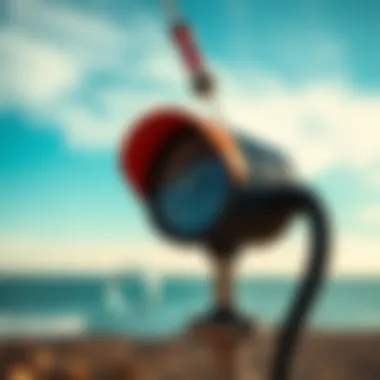
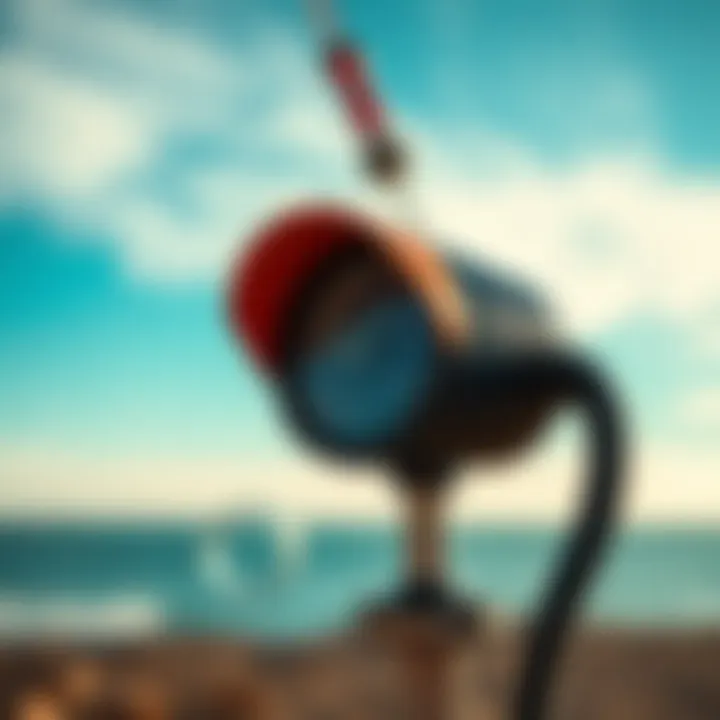
To make full use of it, the user simply pairs the device with a mobile app that displays the data. The app often features visually appealing graphs and animations depicting current, average, and gust measurements, making it easier to interpret wind conditions swiftly. It can feel like having a personal weather station right in your pocket—alerting you to changes that can impact your kiteboarding.
Additionally, syncing with GPS technology allows for contextual data, like where the report is taken and variations for different spots. Once you learn how to read the data, it’s like having a sixth sense out there on the water, which can make all the difference between a mediocre day and an unforgettable session.
"In kiteboarding, having a reliable wind meter can mean the difference between flying high and sitting low."
Understanding Weatherflow wind meters is thus pivotal for those looking to elevate their kiteboarding experience, securing safety, and sharpening performance.
Importance of Accurate Wind Measurement in Kiteboarding
In the world of kiteboarding, the wind isn’t just a backdrop; it's a vital player that determines the success and safety of the ride. Accurate wind measurement becomes essential for enthusiasts who are serious about their performance as well as their safety. When kiteboarding, knowing exactly how fast the wind is blowing and from which direction can mean the difference between an exhilarating ride and a dangerous situation.
One of the most significant elements of accurate wind measurement lies in its impact on performance. Kiteboarders rely heavily on wind speed and direction to optimize their technique and maximize enjoyment. A slight miscalculation can lead to unnecessary struggles or even accidents on the water. Hence, having reliable tools to assess wind accurately allows riders to tweak their maneuvers and gearing accordingly, promoting not only enjoyment but enhancing overall skills.
Additionally, wind measurement aids in decision-making. Being aware of wind patterns can prevent kiteboarders from venturing out in unsuitable conditions. This is especially crucial for beginners who might lack experience in interpreting wind signals.
"The wind is the kiteboarder's best friend, but it's also the fiercest foe," this saying holds true when talking about the unpredictability of nature. Kiteboarding, while thrilling, can turn perilous without proper wind evaluation.
Factors like gustiness or sudden wind shifts can make a peaceful day on the water elusive. Thus, integrating accurate wind measurement tools not only makes the kiteboarding experience smoother but reinforces safety in a sport where unpredictability is a common foe.
Impact on Safety and Performance
The dual focus on safety and performance truly underscores the necessity of precise wind measurement. Without it, kiteboarding can morph from a fun-filled activity into a disheartening challenge or worse, a threat. For instance, strong gusts can lead a kite to stall unexpectedly, resulting in crashes that could cause injuries.
Utilizing Weatherflow Wind Meters provides kiteboarders with real-time data, allowing them to assess conditions continuously. This continuous data flow means riders remain informed, making split-second decisions about when to launch, when to land, and how to adjust their kites throughout their sessions.
Moreover, improvements in personal performance come from understanding how wind interacts with the kite. Analyzing data can reveal insights into riding style that are otherwise difficult to gauge. Performance enhancers often utilize sophisticated setups to track their progress and tweak their strategies, yet it all starts with understanding the winds.
In essence, accurate wind measurement helps ensure fun yet responsible kiteboarding. With the right knowledge and tools, enthusiasts can ride confidently, knowing they’re making informed choices.
Understanding Wind Patterns
To effectively navigate the kiteboarding world, understanding wind patterns is paramount. Wind can change swiftly, directional shifts can be subtle, and without a decent comprehension of these variances, even the most seasoned kiteboarders can find themselves in awkward situations.
Wind is influenced by numerous factors, including geographical layout, temperatures, and the time of day. Kiteboarders need to be aware that what feels like a steady breeze can quickly morph into a strong current. 🔍 For instance, thermal winds often pick up late in the afternoon when land heats faster than water, so kiteboarders need to time their adventures accordingly.
When kiteboarding near shorelines, land features like cliffs or dunes may affect wind flow. Familiarity with local patterns can be beneficial. A common practice is to observe how the wind behaves before heading out for a session. Noting trends allows greater anticipation of conditions.
Technological aids such as the Weatherflow Wind Meter make recognizing these wind patterns easier. Coupled with mobile applications, which often provide forecasts and historical data, kiteboarders can plan sessions effectively. Tools like these synthesize raw wind data into a format that individuals can easily digest, enhancing predictive skills based on environmental fluctuations.
Ultimately, a profound grasp of wind patterns amplifies both the safety and pleasure of kiteboarding. When surfers know what the wind will do, they are more likely to enjoy their time on the water while navigating complications with skillful high-ground confidence.
Comparative Analysis with Traditional Wind Measurement Tools
Understanding how Weatherflow wind meters stack up against traditional wind measurement tools reveals not just their technical prowess, but their profound relevance in enhancing user experiences in kiteboarding and other outdoor pursuits. It’s crucial for enthusiasts to appreciate the nuances between different technologies, as these can greatly affect both safety and performance out on the water.
Anemometers vs. Weatherflow Meters
When discussing wind measurement, anemometers are often the first devices that come to mind. These instruments have been around for ages, utilizing varying methods like cups that spin with the wind or hot-wire technology to gauge wind speed. In contrast, Weatherflow meters introduce a more advanced and flexible approach.
- Data Acquisition:
Weatherflow meters capture real-time wind data through a combination of sensors and cloud-based technology. Unlike standard anemometers, Weatherflow devices often provide data that can be accessed remotely through a smartphone app, delivering convenience without sacrificing accuracy. - Durability and Design:
Traditional anemometers can suffer wear and tear from exposure to the elements. Weatherflow wind meters, however, are designed to withstand harsh conditions often encountered while kiteboarding. Their compact and sleek design not only makes them portable but also more resilient against winds and water splashes. - Ease of Use:
Setting up traditional anemometers can require a bit of technical expertise, while Weatherflow meters are generally more user-friendly, even for newbies. With a simple setup process and clear application interfaces, users can get immediate access to wind conditions.
"Real-time data is not just an advantage; it's a game changer for kiteboarders wanting to ride the winds safely and effectively."
Ultimately, while traditional anemometers have long been reliable, Weatherflow meters present a modern alternative that caters to the demands of today’s adventurous spirits.
Limitations of Manual Measurements
Manual wind measurements can lead to inaccuracies that are unacceptable, especially for kiteboarders who rely on precise data for safety. Here are some key limitations to ponder:
- Subjectivity:
Measurement conducted manually can have a degree of human error introduced, making it less reliable. For example, if a kiteboarder physically estimates wind speed by feel rather than using accurate tools, they may misjudge conditions significantly. - Time-Consuming:
The act of manually measuring the wind requires time and focus that could be better spent enjoying the sport. - Inconsistency:
Manual measurements can fluctuate widely, leading to variable readings that could change even within minutes, leaving the rider unprepared. - Limited Range:
Often, manual readings depend on the user’s location, which may not depict widespread wind conditions over a larger area, unlike Weatherflow meters that can provide comprehensive data affecting entire kiteboarding environments.
In summary, transitioning from manual methods of wind measurement to technologically advanced devices like Weatherflow wind meters not only enhances the accuracy of data but directly contributes to improved safety and enjoyment in kiteboarding. As kiteboarding gear continues to evolve, focusing on beneficial technologies will only add to the thrill and adventure.
Key Benefits of Using Weatherflow Wind Meters
Understanding the advantages of using Weatherflow wind meters is crucial for kiteboarders looking for precise data to enhance their experiences on the water. Unlike traditional measurement tools, which might leave much to chance, Weatherflow meters deliver real-time, accurate wind data that can make a difference between a joyful ride and a risky outing.
Real-Time Wind Data

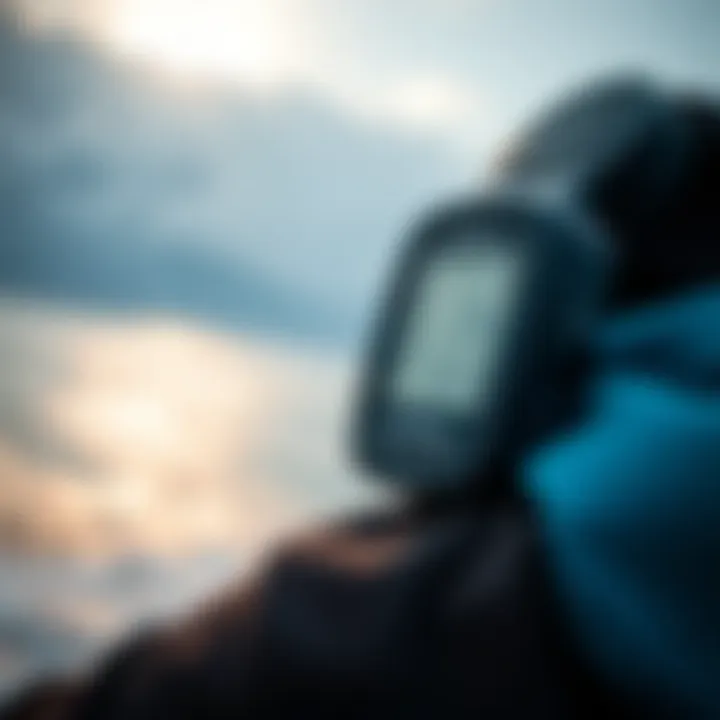
Weatherflow wind meters stand out due to their ability to provide real-time wind data, an essential factor for kiteboarding. In the fast-paced world of water sports, having immediate access to wind speed and direction can help riders make informed decisions swiftly. Imagine you're at the beach, and the wind starts to fluctuate. While your friend is still busy packing their gear, your Weatherflow device has already updated you on the conditions. This proactive feedback could save a kiteboarder from getting caught in dangerous winds or gusts that might jeopardize their safety.
Moreover, the accuracy of these readings extends beyond mere numbers. It gives a clear picture of changing weather patterns, which can significantly improve kiteboarding performance. Knowing whether to shift gears, change the kite size, or even call it a day rests on that real-time data. It creates a safer, more enjoyable experience for both beginners and seasoned kiteboarders alike.
User-Friendly Mobile Application
Another standout feature of Weatherflow wind meters is their user-friendly mobile application. The app, which syncs seamlessly with the weather meter, translates complex data into an easy-to-understand interface. For someone who might not be versed in meteorology, this simplicity is key.
The application provides features like instant notifications on weather changes, historical data for analysis, and even forecasts tailored to local conditions. It acts as a personal assistant, guiding users on optimal times to ride based on their preferred conditions.
Not only do the visuals help in better interpretation of wind data, but they also allow users to log their sessions and monitor long-term performance trends. Such functionality offers insights into how consistent or erratic the conditions have been, guiding kiteboarders to choose their sessions wisely in the future.
The combination of real-time data and an intuitive app marries technology with user experience, creating a practical tool for anyone serious about kiteboarding.
The Weatherflow wind meters thus function not just as tools but as essential companions for kiteboarding adventures, enriching the experience by putting valuable information at the rider's fingertips. In a sport heavily reliant on environmental factors, these advancements elevate the engagement and precision kiteboarders strive for.
Calibration and Maintenance of Weatherflow Wind Meters
Calibration and maintenance of Weatherflow wind meters play pivotal roles in ensuring accurate readings and longevity of the devices. For kiteboarders and outdoor enthusiasts, understanding these aspects means the difference between a thrilling ride and an unexpectedly difficult experience. The mechanics behind these wind meters call for regular checks and calibrations, and while the devices are designed impeccably, they can succumb to anomalies if neglected.
A well-calibrated meter delivers trustworthy data on wind conditions, which is fundamental for anyone engaging in activities dependent on precise wind measurements. A small error in calibration can lead to misleading information. This can result in poor decision-making, potentially compromising safety and performance. Additionally, consistent maintenance can extend the lifespan of these meters, ensuring they remain an essential tool for kiteboarders for many seasons to come.
Calibration Techniques
Calibration of Weatherflow wind meters involves a careful process that ensures they measure wind speed and direction accurately. Here are key techniques:
- Field Calibration:
This technique is typically done in real-time scenarios. Users can compare readings from the Weatherflow meter with a trusted reference meter. If discrepancies arise, adjustments can be made through the accompanying mobile app or directly on the device. - Environmental Calibration:
Factors like elevation, temperature, and humidity can affect readings. It’s recommended to calibrate the device at the specific location where it’s primarily used, as local conditions can vary significantly from the manufacturer’s settings. - Digital Calibration:
Many modern Weatherflow meters allow users to input data and recalibrate via the app. This not only speeds up the process but allows for adjustments based on users’ experiences with local wind patterns.
Maintenance Tips for Longevity
Proper maintenance is key to maximizing the performance and lifespan of Weatherflow wind meters. Here are some practical tips:
- Regular Cleaning:
Dust, pollen, or salt from seawater can accumulate on sensors. A gentle cleaning with a soft cloth can prevent performance degradation over time. Avoid using harsh chemicals. - Charging and Battery Care:
Ensure the device is charged regularly, especially before extended outdoor sessions. Over-discharging can reduce battery life significantly. - Storage Recommendations:
When not in use, store the wind meter in a safe, dry environment. Avoid extreme temperatures which can affect the internal components. - Check for Firmware Updates:
Similar to a smartphone, keeping the device’s firmware updated fosters better functionality and reliability. Most manufacturers provide update notifications through their apps.
"A well-maintained wind meter can be the silent guardian of kiteboarders, aiding seamless rides and preventing unforeseen complications."
In summary, placing emphasis on calibration and maintenance not only enhances the accuracy of Weatherflow wind meters but also secures the investment made into acquiring such tools. For kiteboarders who thrive on the essence of the wind, ensuring their meters are in tip-top shape is not just good practice; it’s essential.
Integration with Other Technologies
The technological landscape has transformed the way outdoor sports such as kiteboarding are experienced. Integration with other technologies significantly enhances the functionality of Weatherflow wind meters, allowing users to obtain precise wind data for better decision-making during their activities. This interplay with various devices creates a symphony of data collection and analytics, placing vital information right at the fingertips of enthusiasts.
One of the primary advantages of this integration is the ability to access real-time weather conditions and forecasts. When Weatherflow meters link effectively with different devices, they offer a multi-dimensional view of environmental factors, which can be a true game changer.
Linking with GPS Devices
GPS devices serve as a cornerstone for many adventure sports, and their connection with Weatherflow meters takes kiteboarding to another level. With GPS devices, users can track their location while the wind meter simultaneously provides data on wind speed and direction. By mapping this information accurately, kiteboarders can pinpoint ideal launching spots and adjust their techniques as necessary based on changes in wind conditions.
Many kiteboarding enthusiasts report that this integration not only enhances their experience but also ensures safety. For example, knowing the precise wind patterns while navigating their route can prevent accidents and improve their riding efficacy.
When you consider the technical aspects,
- GPS data can help in plotting courses in areas where wind conditions are variable.
- Pairing real-time location data with wind speed enables kiteboarders to make informed choices on which spots to explore or avoid.
Moreover, shared data from these GPS-based applications can lead to a community-driven environment where kiteboarders trade tips and experiences based on shared conditions and locations.
Weather Analytics and Forecasting
The integration of Weatherflow wind meters with advanced weather analytics platforms creates a rich pool of data for users. Metrics like wind speed, gust frequency, and sustained wind conditions are analyzed to forecast favorable conditions. The synergy of these technologies allows for an in-depth understanding of not just current conditions but also patterns that may emerge over time.
With this technology, users can access:
- Detailed reports of weather patterns: Historical data can inform kiteboarders when the best times to ride are, enhancing both fun and safety.
- Localized weather forecasts: Instead of relying on generalized weather reports, users can receive specific analyses tailored to their precise location.
- Advanced models predicting sudden wind changes, thereby allowing for safer planning and execution of kiteboarding sessions.
Many kiteboarders rave about how utilizing weather analytics has improved their sessions. It permits them not only to be one step ahead of the weather but also encourages a thoughtful approach to their adventures. By keeping track of meteorological trends, users can develop a sort of sixth sense for understanding when and where the wind will play nicely.
Integration with other technologies is more than just a trend in kiteboarding; it's a tangible way to enhance the overall experience. As kiteboarders increasingly rely on precise data to improve their skills, the role of technologies like GPS and weather analytics is set to grow. They not only allow for a safe ride but also enrich the sport with excitement and knowledge.
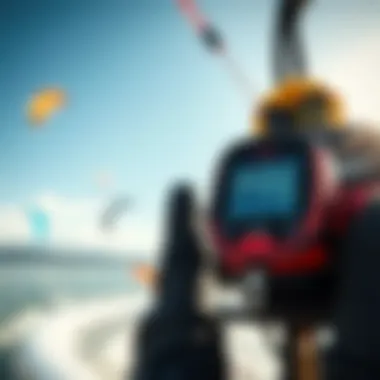
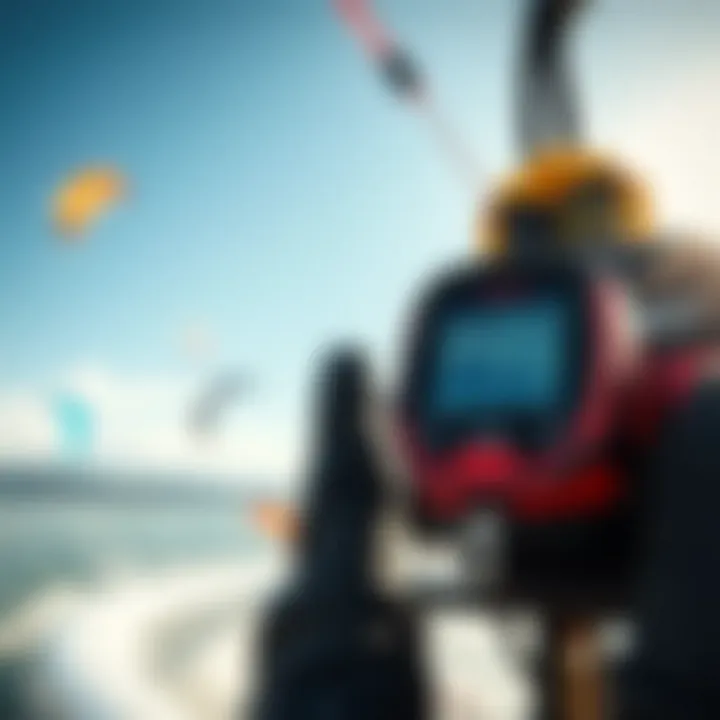
"Understanding the wind isn’t just a part of kiteboarding; it’s the blueprint of your adventure. By connecting to the right technologies, you craft not only a ride but a master plan for the day ahead."
For more details on kiteboarding gear, check out the resources on websites like Wikipedia, or dive into user reviews on platforms like Reddit or Facebook.
User Experiences and Feedback
Understanding the user experience of Weatherflow wind meters is pivotal for grasping their full potential. For kiteboarders and outdoor adventurers alike, personal feedback is a treasure trove of information. Users, in sharing real-world scenarios, not only highlight the practical advantages but also discuss challenges encountered on the water. Such insights are incredibly valuable for anyone considering investing in these devices, providing a perspective that transcends technical specifications.
"The first time I used the Weatherflow meter, it transformed how I approach kiteboarding. Accurate wind readings gave me confidence I didn't expect," shared a dedicated kiteboarder with years of experience. This sentiment echoes throughout the kiteboarding community, showing how critical reliable wind data is in such a dynamic sport.
Case Studies from Kiteboarding Enthusiasts
Diving into specific case studies, we observe how a diverse group of kiteboarding enthusiasts integrate Weatherflow wind meters into their routines.
- Markus, a competitive kiteboarder: Using the Weatherflow meter for training sessions, he found success in refining his technique based on precise wind conditions. One notable instance was during a regional competition where wind shifts were subtle yet impactful. His ability to predict these shifts in real time using the device allowed him to adjust his strategy on the fly, resulting in a podium finish.
- Laura, a hobbyist kiteboarder: Initially hesitant about using technology when kiteboarding, Laura now swears by her Weatherflow wind meter. She describes a memorable trip to San Diego where the wind’s unpredictability initially dampened her spirits. With the meter, she was able to identify safe times to hit the water, thereby enhancing both her performance and enjoyment.
Meanwhile, many users note the seamless integration of the device with their smart devices. This connectivity allows for immediate data access and the ability to share conditions with teammates. It’s not just about solitary sport; it’s about community and collective enjoyment.
Common Issues and Solutions
However, not all experiences have been smooth sailing. Like any technology, Weatherflow wind meters are not exempt from hurdles. Identifying common issues is crucial for prospective users to be well-prepared. Some frequently encountered problems include:
- Calibration issues: Occasionally, users have reported discrepancies in wind readings when first using the meter. This can stem from environmental factors or improper setup. Fortunately, guidance on calibration is provided in the user manual and online forums.
- Battery life concerns: Some enthusiasts have found the battery life to be shorter than expected. Regular monitoring of battery status and ensuring the device is fully charged before outings can mitigate this irritation.
- Connectivity challenges: Users occasionally face issues when trying to link the meter with their smartphones or other devices. Restarting both the meter and phone often resolves these small hiccups, ensuring that users get a seamless experience.
In a community where feedback is shared widely, resources such as Reddit and Facebook groups provide platforms for collaboration. Enthusiasts can swap tips and troubleshoot problems together. Forums like WeatherFlow Users on Reddit offer invaluable support, helping users navigate the technical aspects of using their wind meters.
Expanding on these user experiences enriches understanding and demonstrates that, even with challenges, weather measurement devices like those from Weatherflow can greatly enhance kiteboarding adventures. In the end, it’s about leveraging technology to make informed decisions that lead to safer and more enjoyable sports experiences.
Future Developments in Wind Measurement Technology
The landscape of wind measurement technology is evolving rapidly. Understanding these future developments is crucial for kiteboarders and outdoor enthusiasts who rely on precise wind data for an optimal experience. Integrating advanced technologies can enhance accuracy, improve user accessibility, and even foster a deeper connection between data and its practical applications. As Wind Measurement tools adapt to these developments, they promise significant advantages that go beyond mere gadgetry, impacting safety and performance in real-world conditions.
Emerging Innovations
In recent years, we’ve witnessed an influx of dynamic innovations in wind measurement tools. Some of these include:
- Miniaturized Sensors: Emerging sensors are often small, lightweight, and more efficient. This reduces the need for bulky equipment, allowing kiteboarders to carry them easily on adventures.
- AI Integration: Algorithms powered by artificial intelligence are now capable of analyzing wind patterns and predicting changes. This forecasting can arm kiteboarders with the actionable intelligence they need to make informed decisions.
- IoT Connectivity: The rise of the Internet of Things opens doors to a networked experience. Kiteboarders can connect their devices to a larger ecosystem of wind weather stations, enriching their understanding of wind conditions far beyond their immediate vicinity.
- Augmented Reality (AR): Imagine looking through AR goggles and seeing real-time wind data visualized right in front of you. This concept, though still in its infancy, could change how kiteboarders interpret their environment.
These innovations aren't just flashy features; they offer tangible benefits. More precise measurements mean more successful outings with fewer surprises. By staying on the cutting edge, kiteboarders can enhance both enjoyment and safety.
Market Trends and Predictions
Looking ahead, market trends suggest a continued push toward integrating technology with outdoor sports equipment. Key predictions include:
- Growth of Smart Devices: Expect to see a surge in smart wind measurement devices that seamlessly connect with smartphones and tablets, enabling real-time updates and alerts.
- Increased User Demand for Personalization: As users become more sophisticated, there’s a growing demand for devices that can tailor wind data to individual skills and preferences. This personalized approach can make all the difference in fine-tuning performance.
- Sustainability and Eco-Friendly Designs: With increasing awareness about environmental impacts, manufacturers are likely to prioritize eco-friendly materials and renewable energy sources in future products, appealing to a conscious consumer base.
- Integration with Wearable Tech: As wearable technology gains momentum, we may see wind meters designed to interface directly with fitness trackers and smartwatches, providing an even more streamlined experience.
The convergence of these trends suggests that the wind measurement technology market is not just about adaptation but also about revolutionizing how the sports community interacts with their environment. It’s all about making the rider experience richer and more intuitive.
The goal of future developments in wind measurement technology is to merge efficiency, user-friendliness, and safety into a package that every outdoor enthusiast can harness.
Culmination: The Role of Weatherflow in Kiteboarding
The integration of Weatherflow wind meters into kiteboarding routines significantly enhances the practicality and safety of this exhilarating sport. As kiteboarding continues to grow in popularity, the need for accurate wind measurements becomes more critical. The correct data can shape a kiteboarder’s performance and, more importantly, ensure their safety on the water.
Weatherflow devices offer features that optimize kiteboarding experiences. By providing real-time, precise wind data, they empower riders to make informed decisions. This capability can make the difference between a fantastic day of riding or a harrowing experience. The blend of technology with outdoor sports not only serves to inform but also to elevate the enjoyment of the sport itself.
In addition to their fundamental functionalities, Weatherflow devices can further integrate with smartphones and other connectivity options, allowing for seamless access to critical weather information. This feature proves especially vital in keeping up with the unpredictable nature of outdoor conditions, delivering notifications and updates that enhance situational awareness.
"Safety is not just about wearing a life jacket or knowing your basic skills; it's about understanding your environment and making smart moves based on reliable information."
Summation of Key Points
In summarizing the key points discussed in this article, the primary focus remains on the indispensable nature of Weatherflow wind meters in kiteboarding. The importance can be outlined as follows:
- Accurate Wind Data: Essential for safety and performance; it aids kiteboarders in understanding wind patterns.
- User-Friendly Interface: The accompanying mobile app simplifies access to data, making it practical even for novices.
- Technological Integration: Compatibility with other devices, such as GPS units, enhances the overall experience by offering comprehensive weather analytics.
- Calibration and Maintenance: Understanding how to maintain and calibrate these devices ensures longevity and accuracy, integral for serious kiteboarders.
These components illustrate how Weatherflow devices serve as valuable tools in the kiteboarding community, facilitating a more informed and ultimately safer riding experience.
Encouragement for Integration into Kiteboarding Practices
Encouragement for the incorporation of Weatherflow wind meters into the practices of kiteboarding enthusiasts rests on several considerations. For beginners, adopting these devices opens a world of insights into wind conditions. Rather than relying solely on experience or guesswork, newcomers can ground their understanding in data-driven decisions.
For seasoned kiteboarders, the integration of Weatherflow meters augments existing knowledge, allowing for more precise tuning of skills according to specific wind conditions. This detail can lead to improvements in performance, as riders adapt their techniques based on real-time feedback.
In light of these benefits, it’s prudent for all kiteboarding enthusiasts to consider the investment into Weatherflow technology. Not only does it offer additional layers of safety, but it also enriches the riding experience, making each session more engaging and enjoyable. The clearer the picture they have about the wind, the better they can ride—and after all, who wouldn’t want to make the most out of their time on the water?















